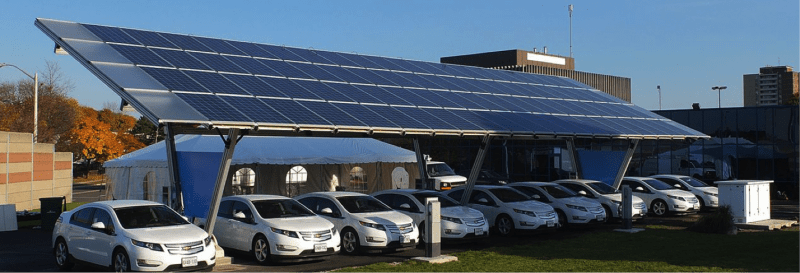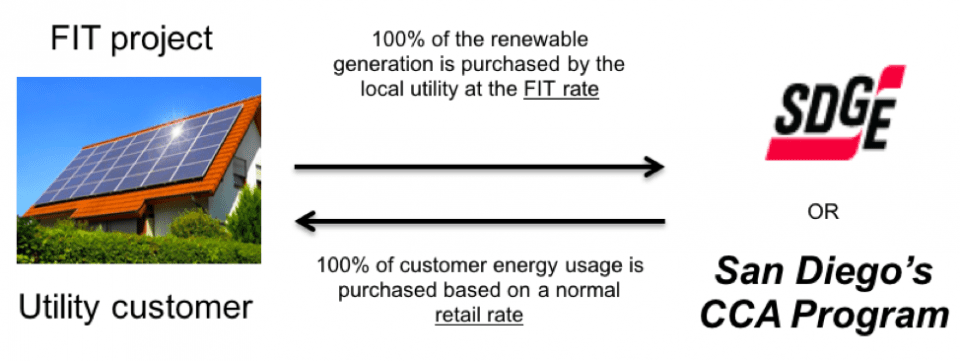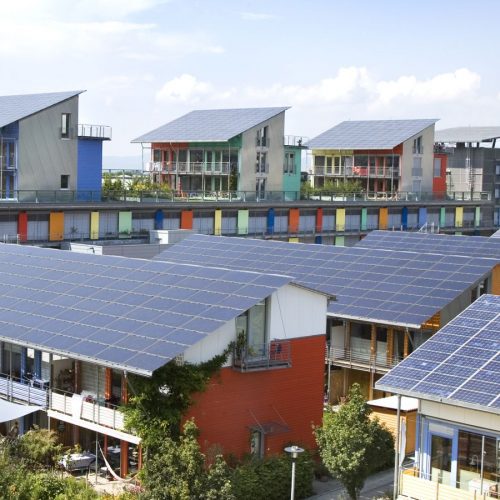Senate Bill 1148: Enabling resilience through Master Metering
This blog post explains why the Clean Coalition is facilitating SB 1148.
Read More
Unleashing clean local energy
A Feed-In Tariff (FIT) is a standardized, long-term, guaranteed contract that allows smaller local renewable energy projects to sell power to the local utility or other load-serving entity. Market-based, cost-effective FITs with streamlined interconnection allow local businesses, residents, and organizations to install clean local energy projects in underutilized spaces such as rooftops, parking lots, and wastewater treatment plants.
FITs are the only approach that has been proven to unleash wholesale distributed generation (WDG), a market segment that is vastly underserved in the United States.

A FIT with Market Responsive Pricing allows prices to adjust based on market response — ensuring that energy contracts are always set at the best market price, while eliminating the parasitic transaction costs and failure rates associated with other approaches.
Because these programs have proven to be the most effective mechanism for deploying local renewables, the Clean Coalition evaluates, designs, and implements CLEAN Programs: market-based, cost-effective feed-in tariffs (FITs) with streamlined interconnection.
Our comprehensive guide to implementing FITs
The Clean Coalition designed this guide for anyone wishing to implement CLEAN Programs: market-based, cost-effective FITs with streamlined interconnection.

NEM is not enough
California and many other states already have an effective policy in place for clean local energy behind the customer’s meter: net energy metering (NEM). But NEM typically works best for residential installations — like rooftop solar on single-family homes — or other owner-occupied properties.
NEM is not well suited to commercial-scale solar for a number of reasons:
A well-designed FIT removes all of these issues.

Faster, cheaper, more reliable
FITs are faster, cheaper, and more reliable than auctions because they are simpler for developers, property owners, utilities, and regulators. The standardized contracts and prices of FITs can be approved in a single decision — compared to the many rounds of proposals, evaluation, negotiation, and approvals that delay auctions — saving both time and money.
In sharp contrast, auction processes are expensive, slow, and risky, delayed by many rounds of proposals, evaluation, negotiation, and approvals. This raises costs for all parties, including ratepayers, and results in far fewer projects being built. Across California RPS solicitations, for example, fewer than 1 in 10 project bids were actually developed — resulting in high administrative costs for the program and exorbitant risks and costs for renewable energy project development:


Lowering the price of solar
Germany provides a real-world example of how the United States can unleash the vastly underserved WDG market.
In 2000, Germany enacted a national FIT that propelled the country to become the world’s clean energy leader. This FIT targeted made it easy to build smaller local renewable energy projects in the built environment, connect them to the grid, and sell power to the local utility. Germany’s solar deployments are almost entirely sub-2 megawatt projects in built environments, interconnected to the distribution grid. Replicating Germany’s scale and efficiency in California would result in rooftop solar costing 4-6 cents/kilowatt-hour (kWh).

Features of Clean Coalition FITs
Our CLEAN Programs, FIT designs with streamlined interconnection, include Market Responsive Pricing (MRP), which allows the price paid under the FIT for both solar and storage to adjust based on market response; this ensures that the load-serving entity pays the optimal price for clean local energy. Market Responsive Pricing is critical to successful procurement under the FIT, because it avoids these potential issues:
Our FITs may also include a Dispatchability Adder to make renewable energy available whenever needed instead of only when the sun is shining or wind is blowing.

Market-based, cost-effective
The Clean Coalition designs CLEAN Programs — market-based, cost-effective FITs with streamlined interconnection and Market Responsive Pricing — for municipalities, utilities, and Community Choice Energy agencies (CCEs) across the country.
We have designed or helped design FITs for the following:
Thanks to the Clean Coalition’s leadership on Palo Alto CLEAN, the city is now able to bring megawatts of clean local energy online quickly and cost-effectively.
Peter Drekmeier
Former Mayor of Palo Alto
Cities and states around the country are already using FITs to deliver cost-effective renewable energy, strengthen local economies, foster environmental sustainability, and enhance energy security.
Making Way for Wholesale Distributed Generation: Not for the Faint of Heart | Microgrid Knowledge (July 27, 2018)
Feed-In Tariffs for Unleashing Clean Local Energy and Obviating Polluting Gas Plants in California | Huffington Post (January 8, 2018)
City of Palo Alto Paves the Way for More Electric Vehicles with Local Renewable Energy |City of Palo Alto (July 20, 2017)
Unleashing clean local energy through smart policy | Medium (March 24, 2017)
Adopting elements of FITs could spur solar growth |Utility Dive (July 18, 2016)
ReMAT-specific filings:
Other FIT filings:
The latest in clean local energy
Learn about our innovative projects and initiatives on our blog, and see what others are reporting about our important work.
This blog post explains why the Clean Coalition is facilitating SB 1148.
Read MoreIn this Legislative Roundup written by the Clean Coalition, we lay out the key DER energy-related bills currently making their way through the California legislature this year.
Read MoreA letter signed by 18 members of Congress from California, cites the Clean Coalition's work while expressing concern about the Income Graduated Fixed Charge proceeding at the CPUC.
Read article